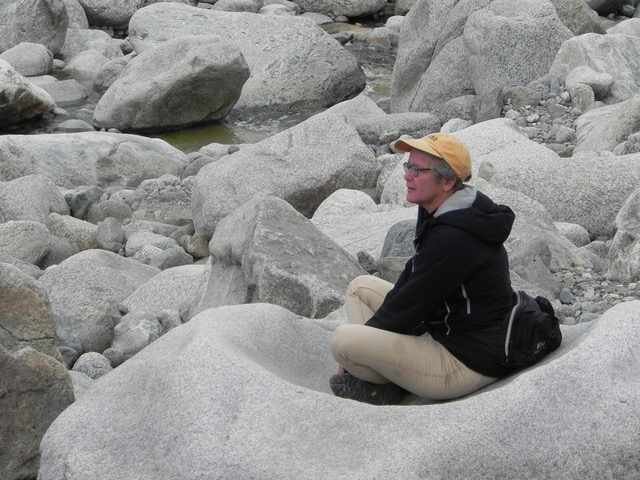‘Mindfulness Examined’ tutorial explores meditation
November 30, 2022

For the past five years, Kim Gutschow, a senior lecturer in religion, anthropology, and sociology, has taught a tutorial called “Mindfulness Examined.” In pairs, its students explore the benefits that mindfulness provides through in-class meditation and weekly readings.
Gutschow begins each class with a meditation, relaxing her students, and then shifts into a traditional tutorial format where students discuss the essays they’ve written on the assigned readings. “It’s a deeply interdisciplinary course with a breadth of topics covered, from the study of Buddhism to affective neuroscience to how mindfulness is being used in today’s landscape,” Gutschow said. “Issues of social suffering, such as systemic inequality, mental health, trauma, and climate change, are addressed.”
Trauma and suffering are not issues that may be repaired, Gutschow said, but there can be a healthy way to deal with them. Many students have experienced trauma in different forms: “Little ‘T’ trauma to big ‘T’ trauma,” as she described them. Little traumas, or stressors, can be the difficulties that we encounter in our everyday lives, such as schoolwork, lack of a social life, or homesickness, as opposed to larger traumas like assault. While Gutschow recognizes how little control humans have over what happens to them, she believes that mindfulness can help in how they process difficulties. “The only thing we can do is have some agency over how we respond,” she said. “Mindfulness simply allows [for] the awareness that we have agency over our emotions and responses to stressful situations and to the degree of suffering that we experience from our situation.”
Gutschow’s interest in mindfulness was sparked when she spent 14 years in a Tibetan Buddhist nunnery in the state of Ladakh, located in northwest India’s Himalayas. While pursuing a doctorate, she participated in extensive meditation. A valuable lesson that she learned — and that she wants to instill in her students — is to live in the present moment. “As citizens of American society, we’re always focused on the past and future,” Gutschow said. “I see many students whose primary objective for their education is to get their degree and then a job. We focus on the fact that happiness is in the future, but what about if happiness could be achieved right now?”
“Everybody has different stressors,” she continued. “We [should] just pause to be aware of the emotions that might be driving our reactions and have an understanding of how we could think about them more healthily… Simple things like our awareness of our emotional and physical responses are enormously useful.”
Brady Foehl ’22.5, who is currently taking the tutorial, echoed the importance of self-awareness. “One of my main takeaways from the class is how important awareness of our feelings is in our lives,” he said. “If we are aware of how we are feeling, whether it’s anger, anxiety, or joy, we are more likely to be able to choose which emotions to follow. We are often controlled by our feelings, but with awareness, we give ourselves the chance to pause and open up space to cultivate more positive thoughts and emotions.”
At the end of each tutorial discussion, Gutschow asks her students to compare their emotions from the start of class to what they now feel. “They often respond that they feel more present in the moment and feel a sense of calmness, as well as the ability to handle whatever they are facing,” she said.
During the course, some of Gutschow’s students have come to realize that they might not be as happy at the College as they think they are. “I have had students who have literally, in the middle of the course, [said] ‘I don’t know if I want to stay at Williams or take a break,’” she said. “And I have had students who have done both… The class allows students to see how tormented they can be by society’s expectations and how they can be tormenting themselves. When they take a semester or a year off, they’re so happy they do it, and if they stay, they have a renewed sense of how they can be happy with their current path.”








